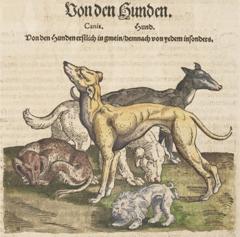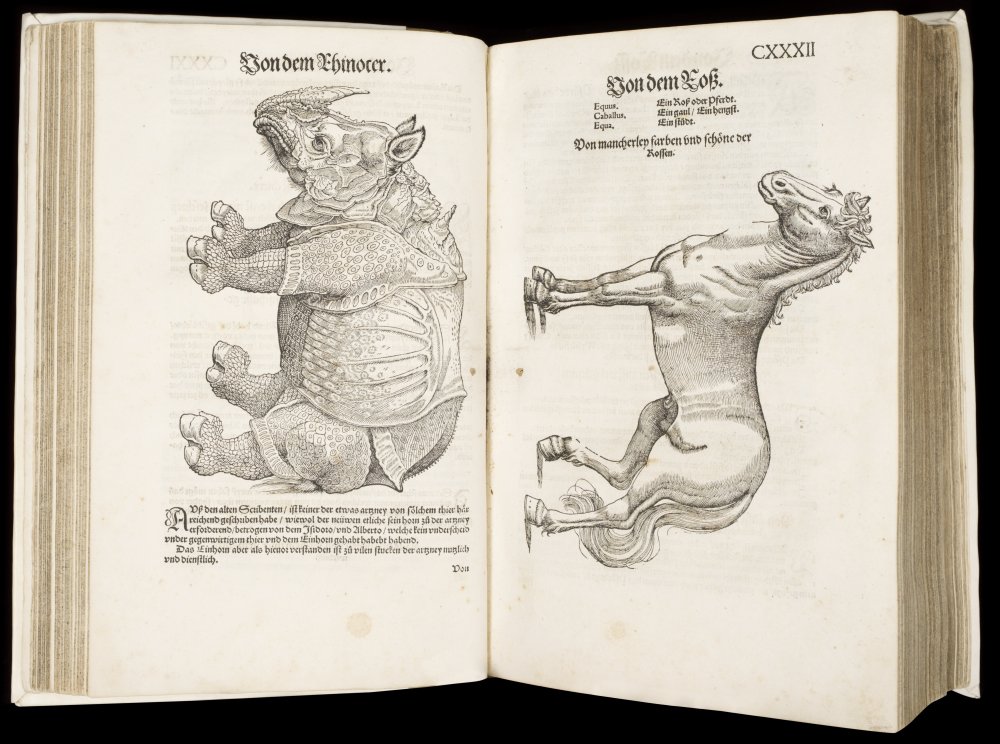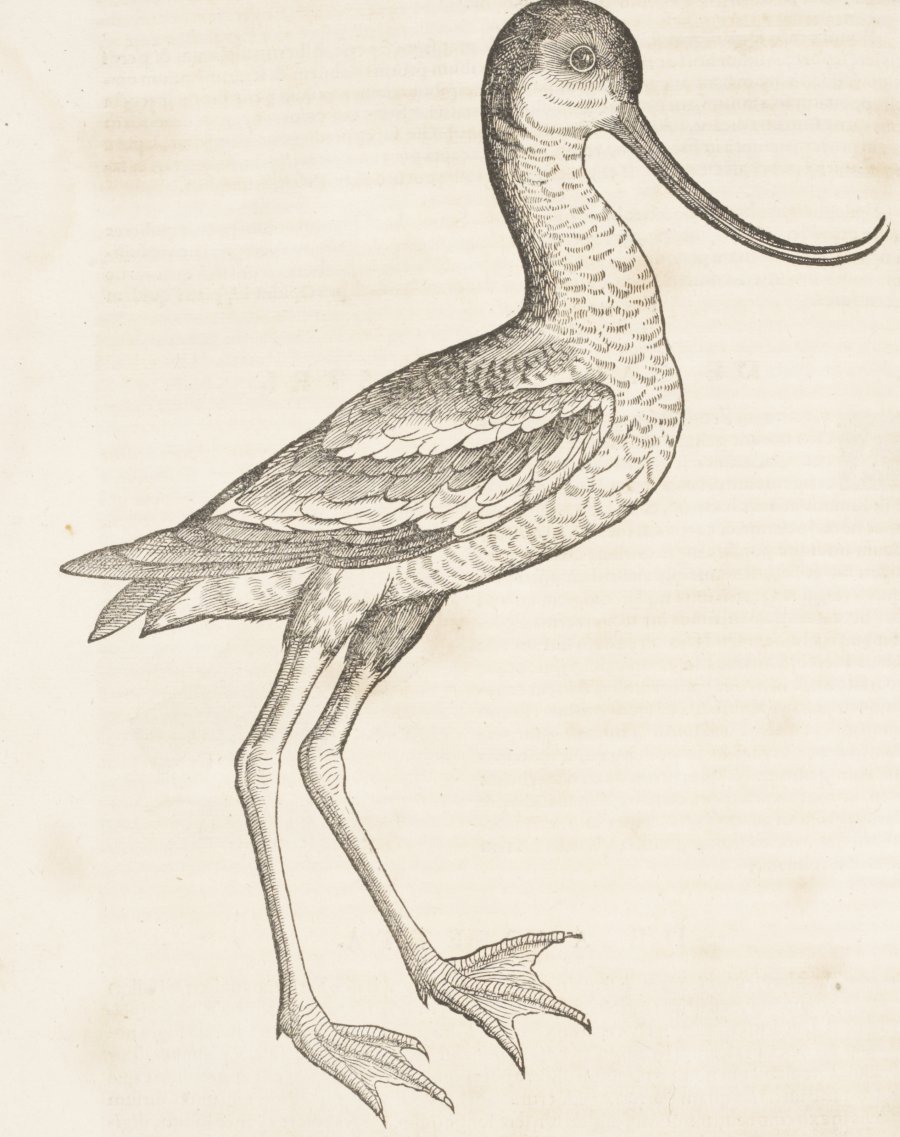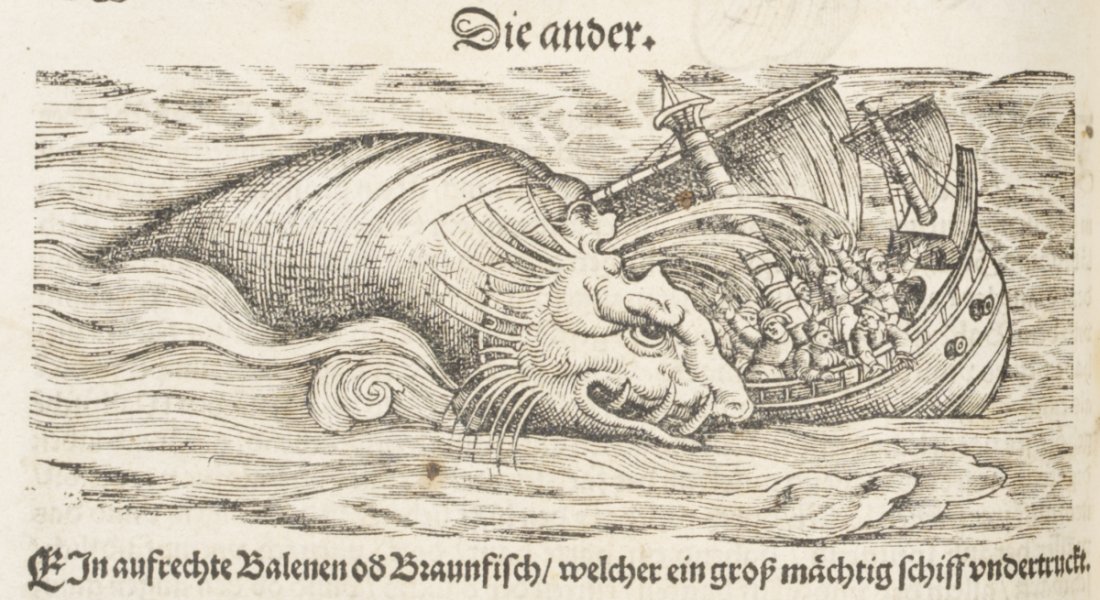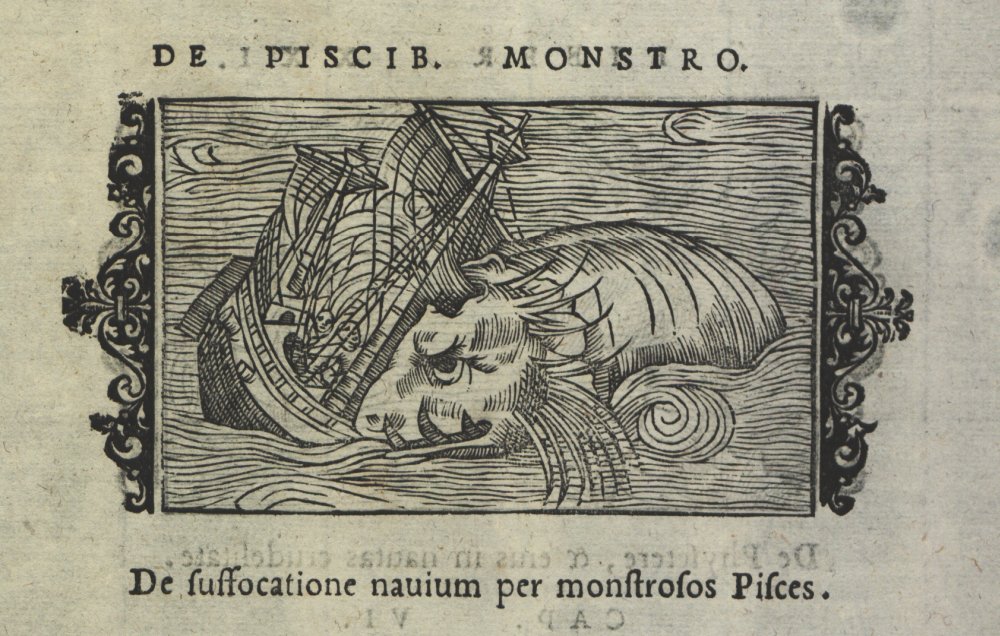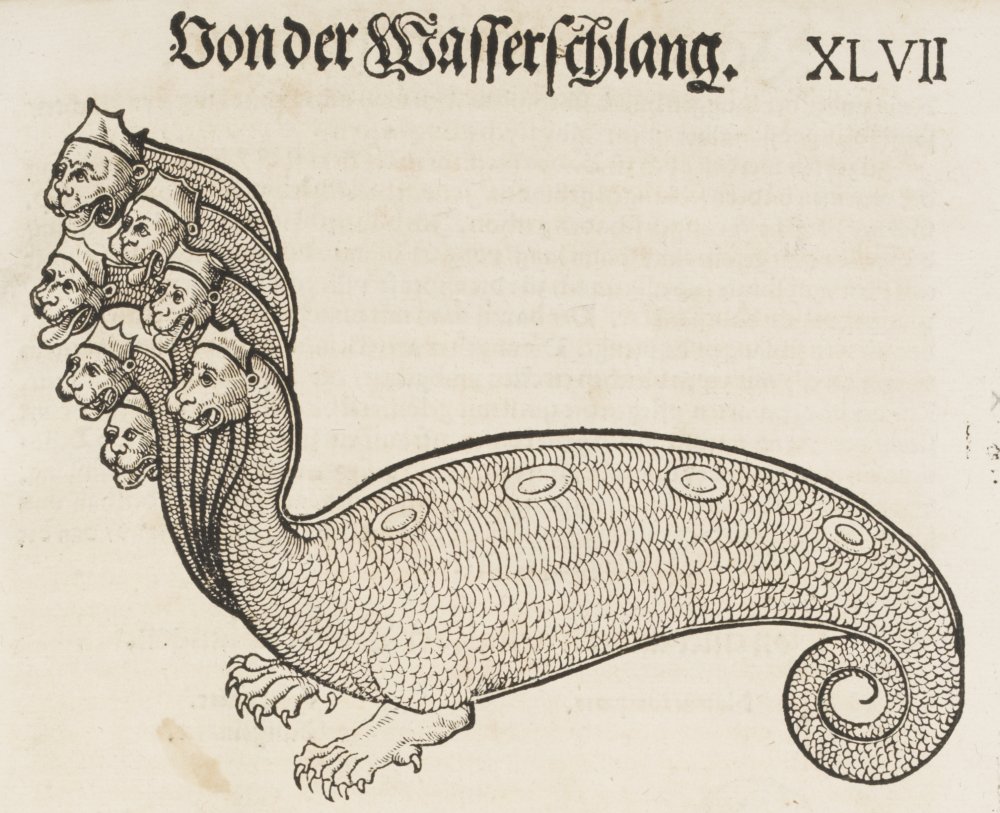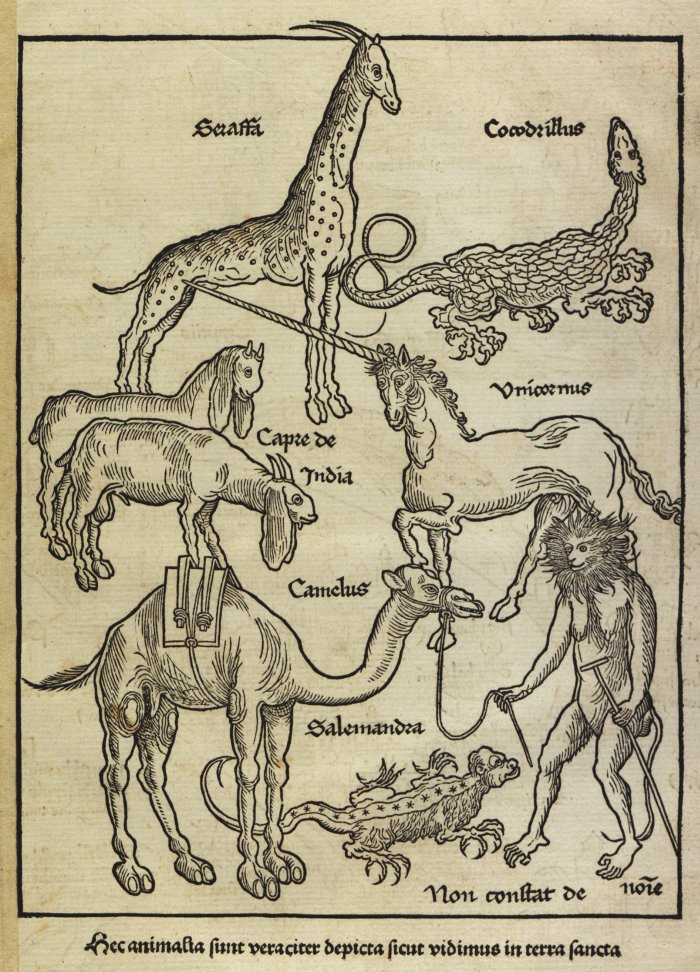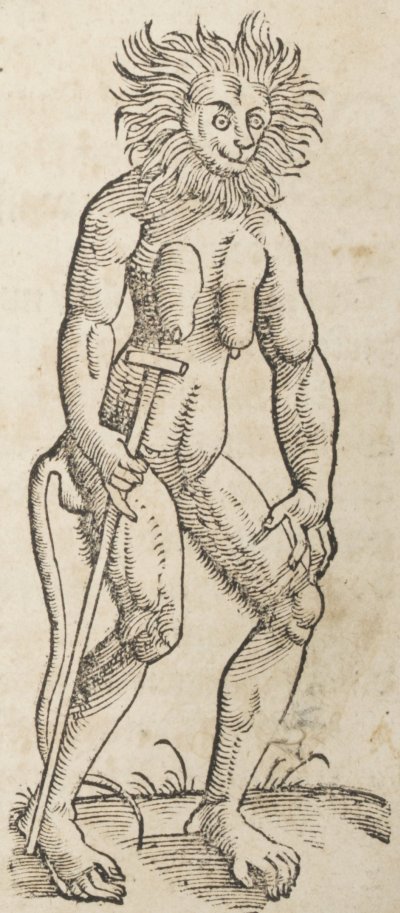Bestiaries and copy/paste
Gessner's Tierbücher are based on precise observation, literary study and scholarly correspondence. They're structured according to Aristotle's distinction of viviparous and egg-laying quadrupeds, birds, aquatic species, snakes and insects. The four volumes of the first edition in Latin appeared between 1551 and 1558, printed by Froschauer, the book on snakes appeared posthumously in 1587. Gessner names the animals in up to 13 languages, investigates their distribution, way of life, emotional life, benefits for human beings and occurrences in literature. The vernacular translations by Caspar Wolff, Conrad Forer, Rudolph Heusslin and Johannes Herold resulted in drastic abridgments and adaptations. By and large, these were no longer encyclopedias, but rather popular guides.
The images of the rhinoceros and the dogs are based on works by Albrecht Dürer. (shelmarks: MUE Holzer fol A 65 / MUE Rar alt fol 421)
The Fischbuch translated into German by Conrad Forer, contains the illustration of a whale destroying a ship (shelfmark: MUE Zesa 21). This illustration is evidently based on Olaus Magnus' Carta Marina.
Gessner included mythical creatures in his Tierbücher. The illustration suggests that the seven-headed water snake was not mere fancy. (shelfmark: MUE Gross Z 400 : 3)
The woodcut by Erhard Reuchwich in Bernhard von Breydenbach's Reisebericht aus dem Heiligen Land was the model for Gessner's baboon. (Signatur: MUE Bong V 929 : 1)

